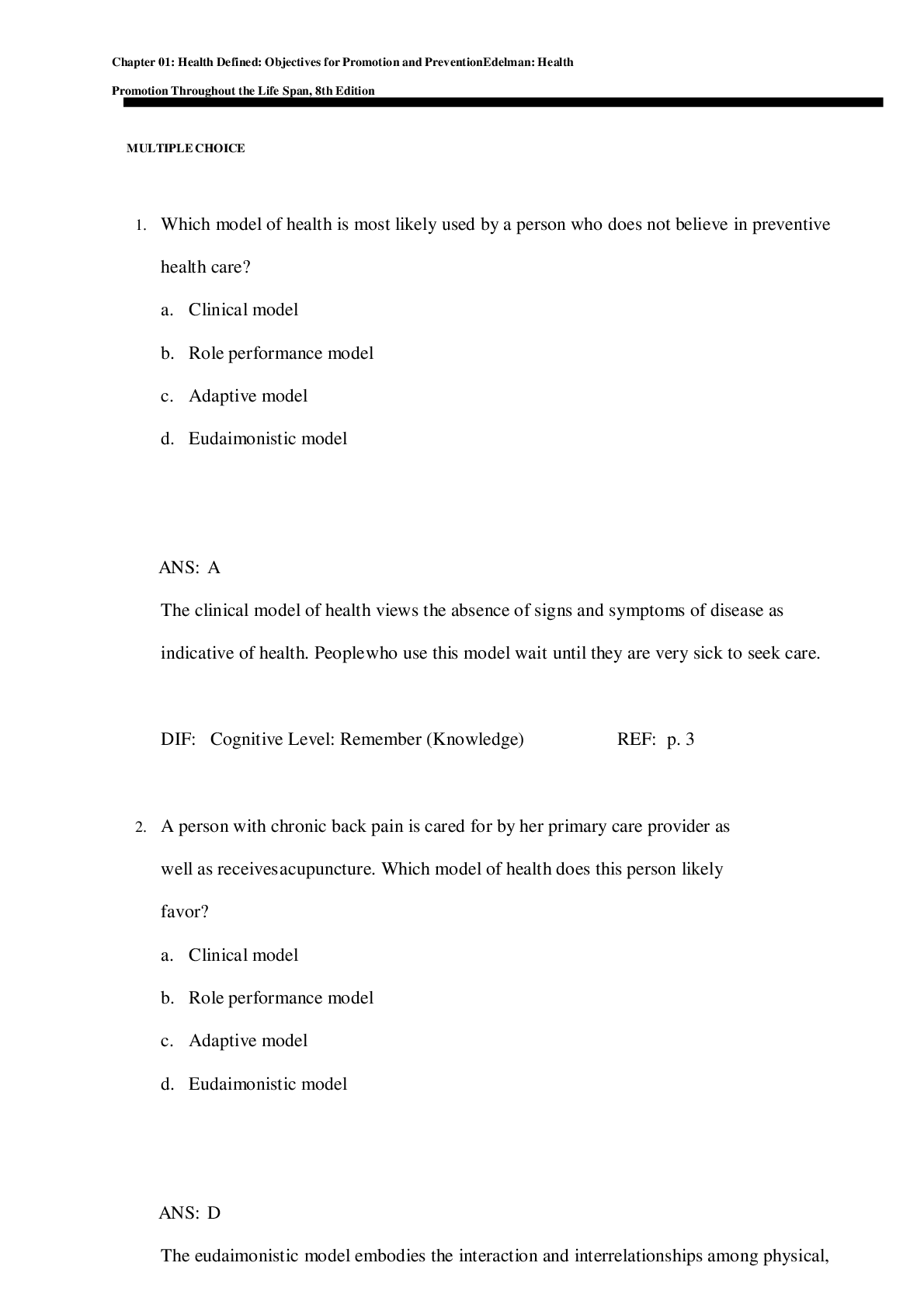*NURSING > QUESTIONS & ANSWERS > ADVANCED PHYSIOLOGY AND PATHOPHYSIOLOGY ACROSS THE LIFE SPAN MIDTERM EXAM 2020 (All)
ADVANCED PHYSIOLOGY AND PATHOPHYSIOLOGY ACROSS THE LIFE SPAN MIDTERM EXAM 2020
Document Content and Description Below
Question 1. A 77 year old female hospital patient has contracted Clostridium difficile during her stay and is experiencing severe diarrhea. Which of the following statements best conveys a risk that t... his woman faces? Which diuretic acts by inhibiting sodium chloride reabsorption in the thick ascending limb of the loop of Henle? A 77 year old female with a diagnosis of copd is experiencing impaired gas exchange and CO2 retention, despite a rapid respiratory rate. Which of the following phenomena would her care team most realistically anticipate? Her kidneys will adapt with an increase in plasma HCO3- and her pH will decrease. A 68 year old woman with a new onset a vascular dementia has recently begun retaining urine. Which of the following physiological phenomena would her care providers most realistically expect to be currently occurring as a result of her urinary retention? Hypertrophy of the bladder muscle and increased bladder wall thickness. Question 2. At which of the following locations in the nephron would a nurse practitioner first expect blood to be largely free of plasma proteins? Question 3. A 14-year-old boy who appears to be intoxicated is brought to the emergency department by ambulance. The EMTs report that the boy has denied consuming anything out of the ordinary, but an open antifreeze container was found in the boy's room. Which of the following is likely to be used to treat the patient's symptoms? Question 4. A 4-year-old boy who has been deaf since birth and has bilateral cataracts has been brought to the emergency department by his mother because she noticed blood in the toilet after he last voided. Urinalysis confirms heavy microscopic hematuria as well as proteinuria. What will the care team's initial differential diagnosis most likely be? Question 5. A patient is brought to the emergency department with complaints of shortness of breath. Assessment reveals a full, bounding pulse, severe edema, and audible crackles in the lower lung fields bilaterally. What is the patient's most likely diagnosis? [Show More]
Last updated: 1 year ago
Preview 1 out of 13 pages
Instant download
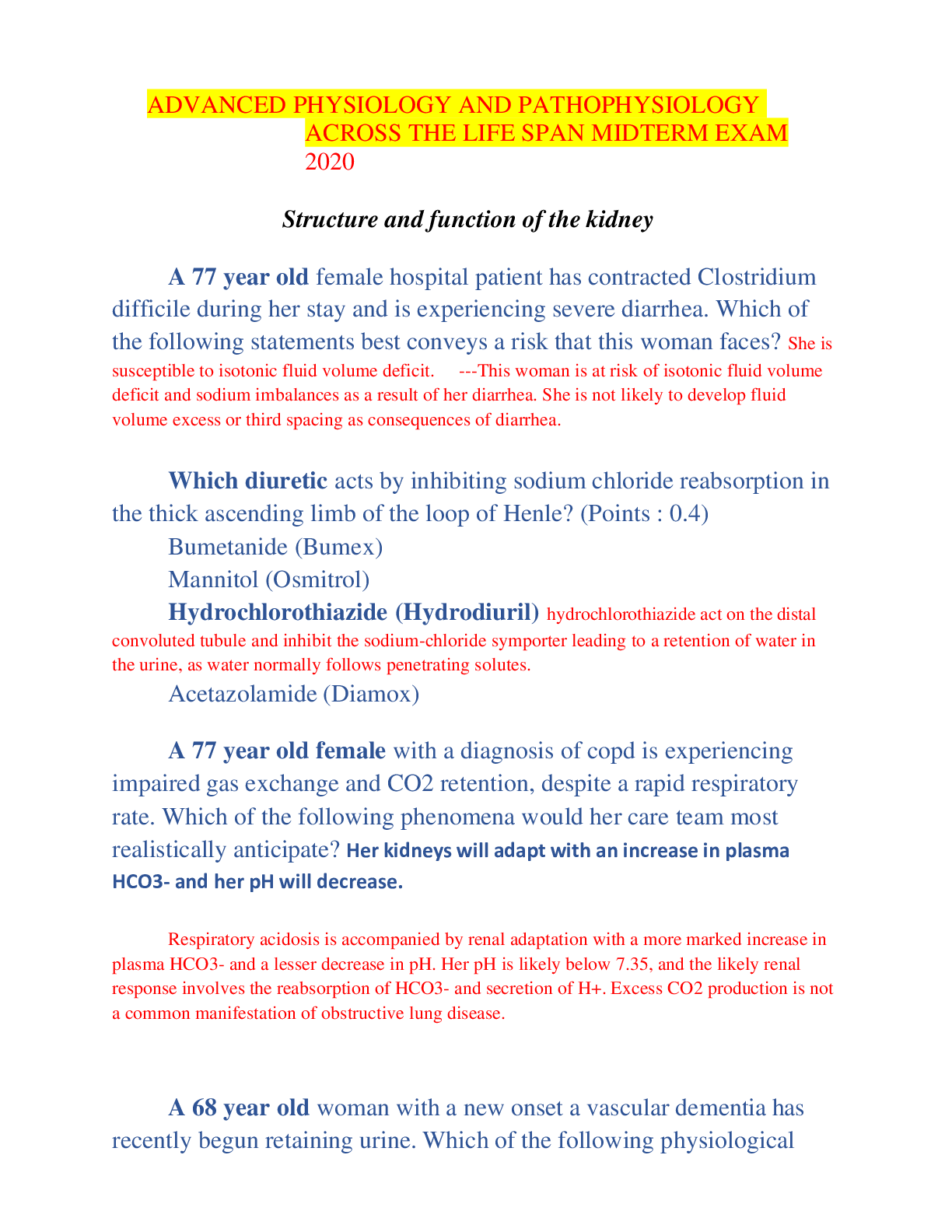
Buy this document to get the full access instantly
Instant Download Access after purchase
Add to cartInstant download
Reviews( 0 )
Document information
Connected school, study & course
About the document
Uploaded On
May 24, 2021
Number of pages
13
Written in
Additional information
This document has been written for:
Uploaded
May 24, 2021
Downloads
0
Views
37

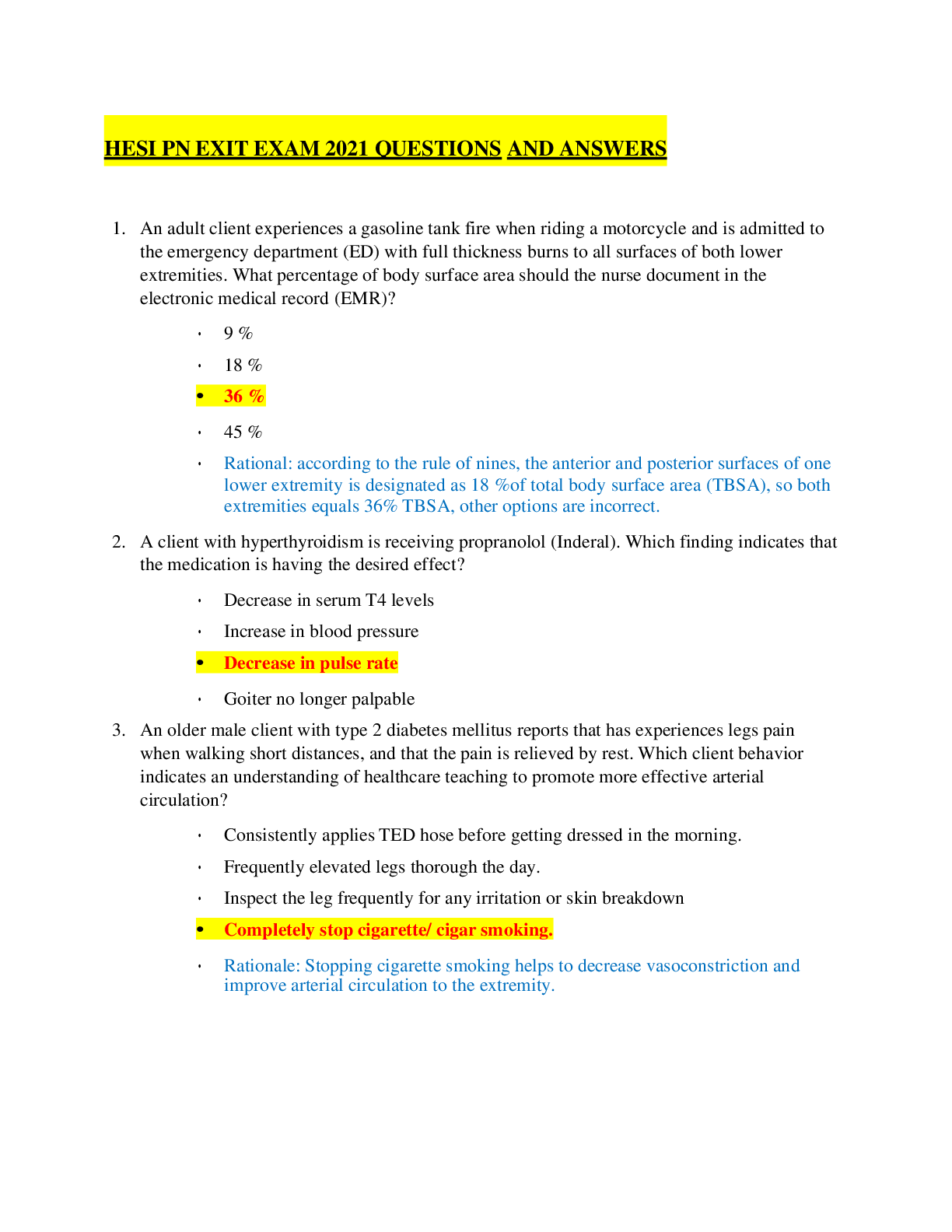




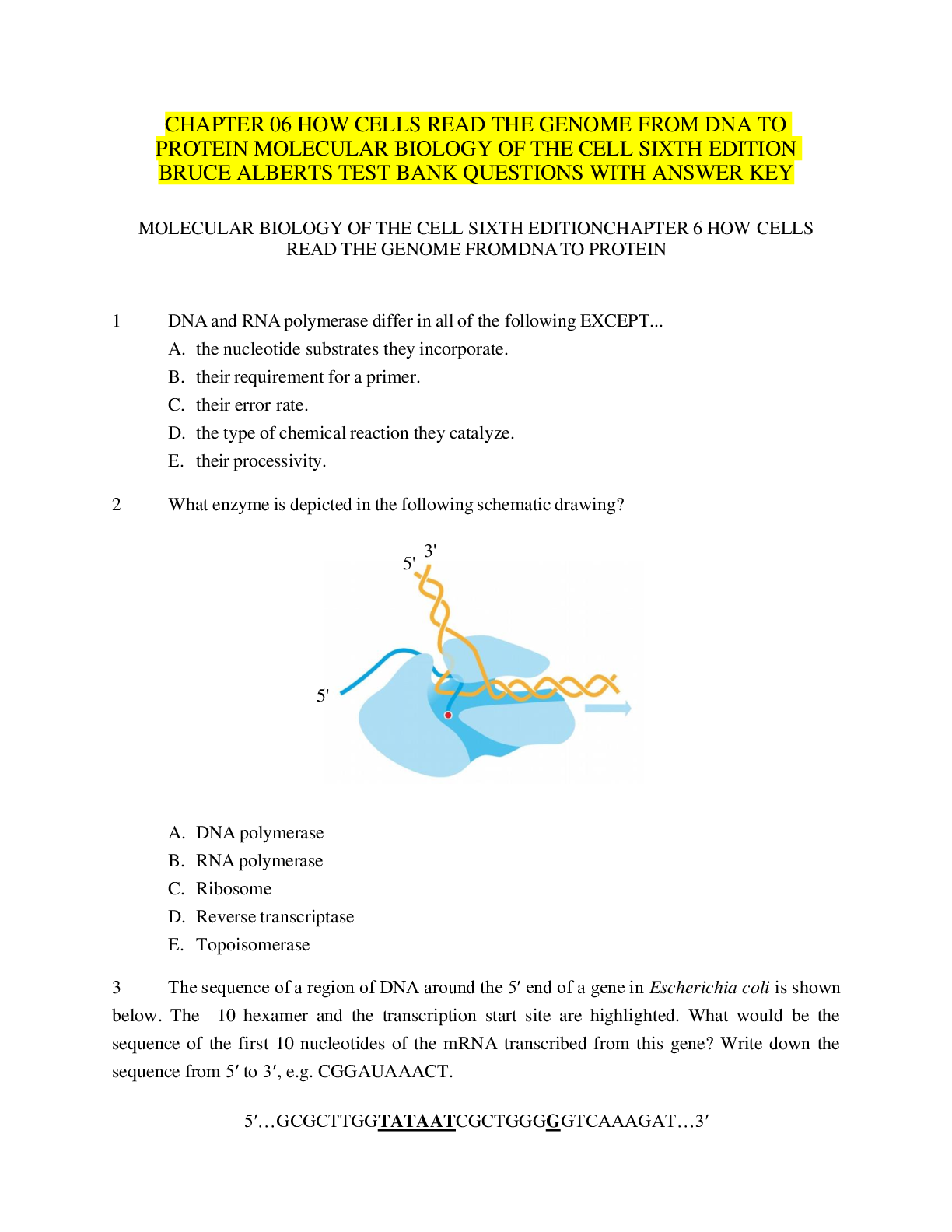


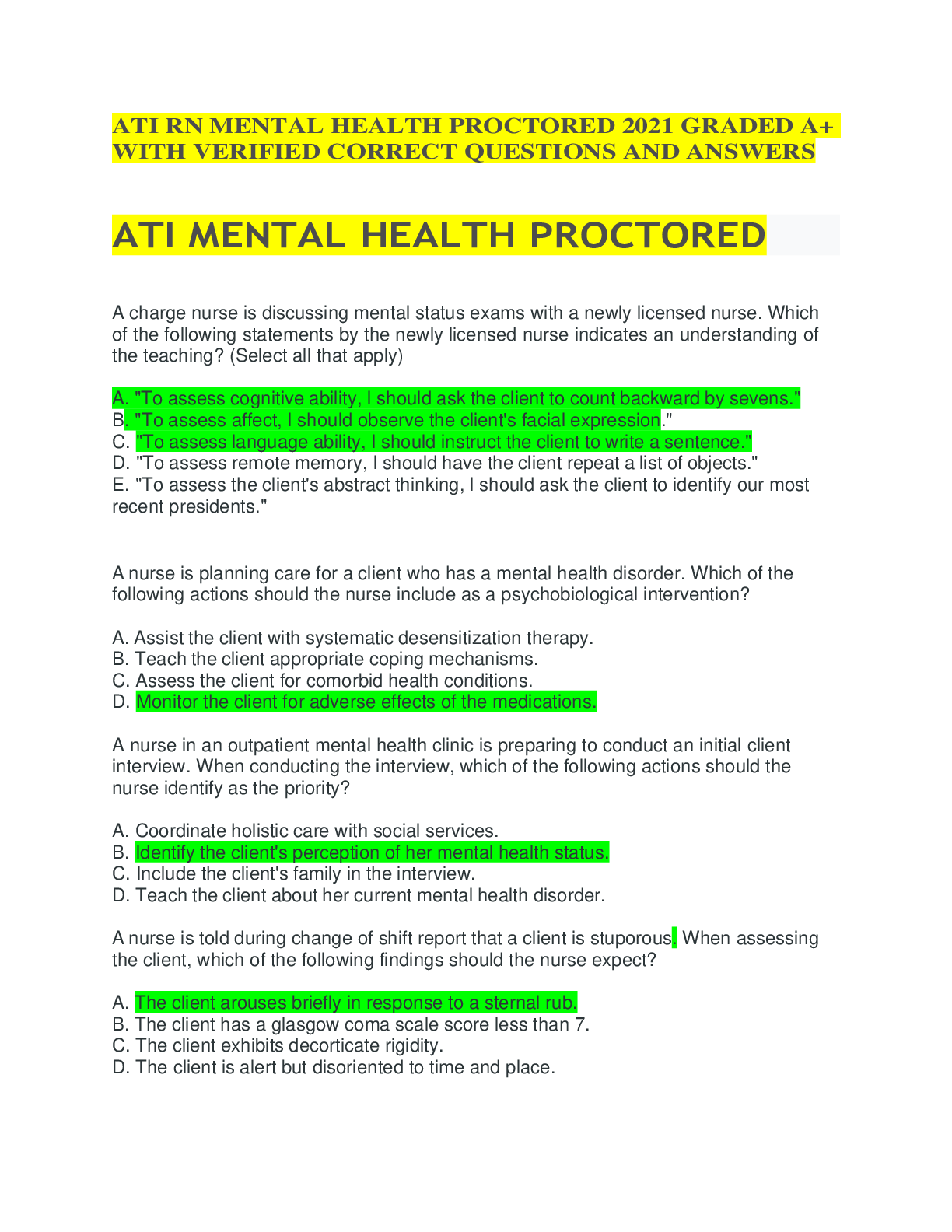
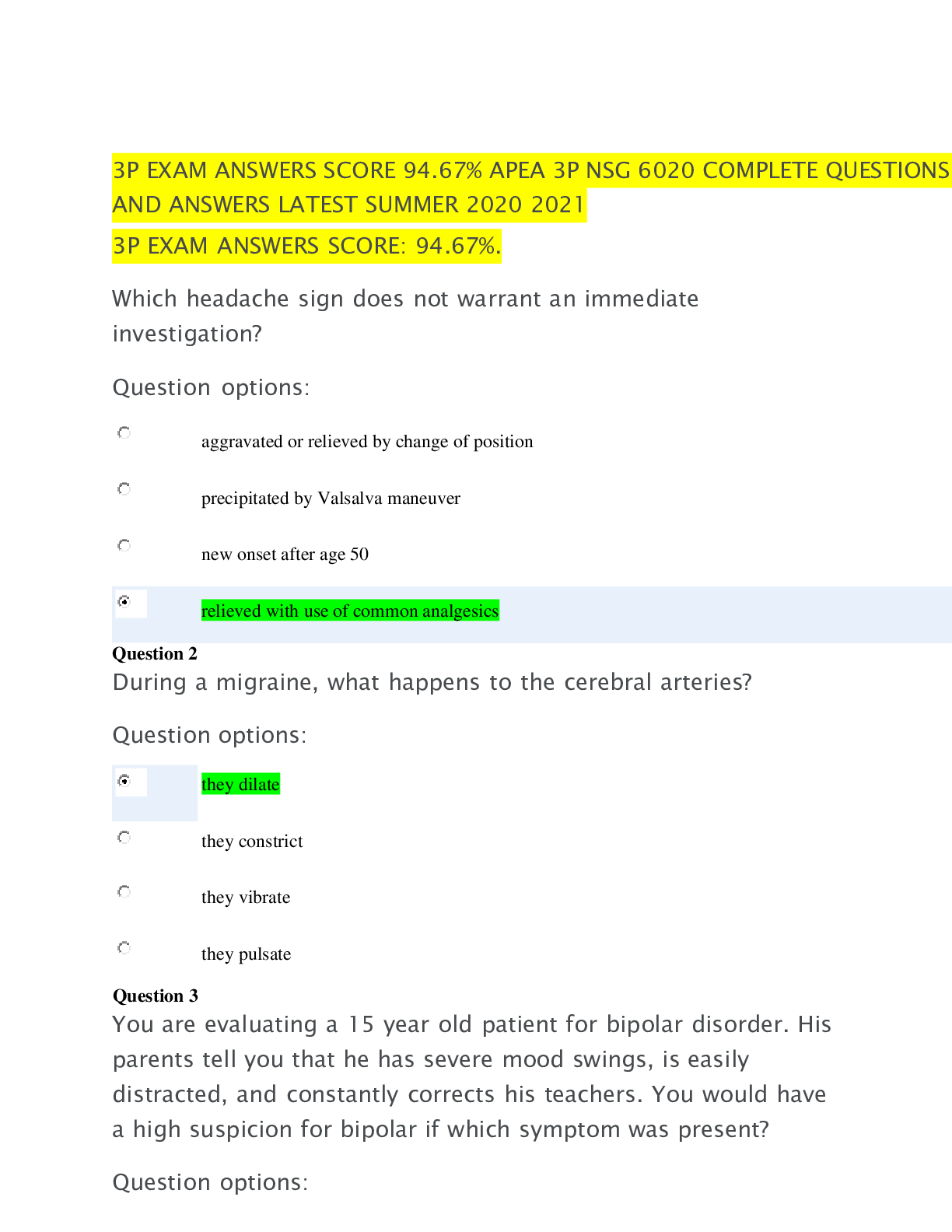


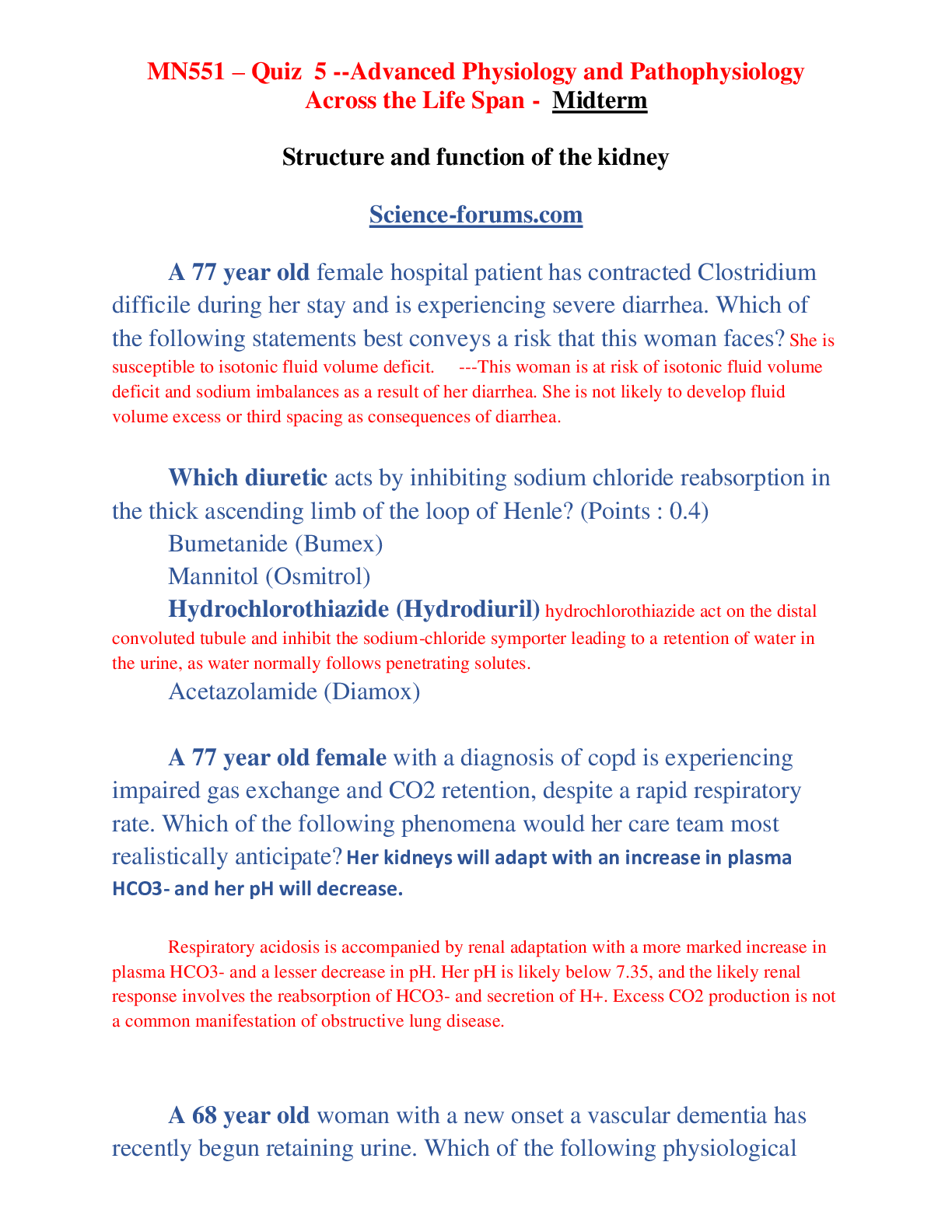
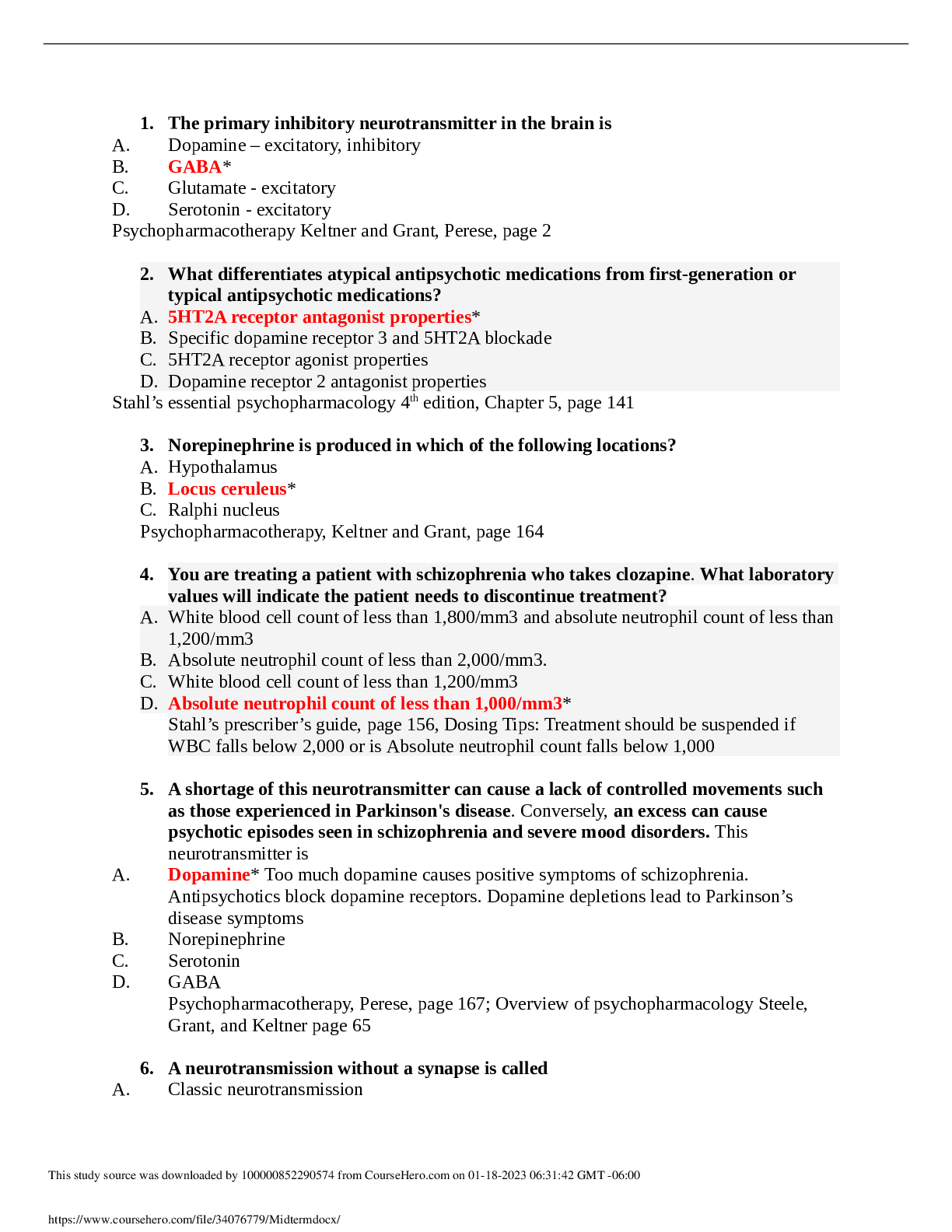
.png)
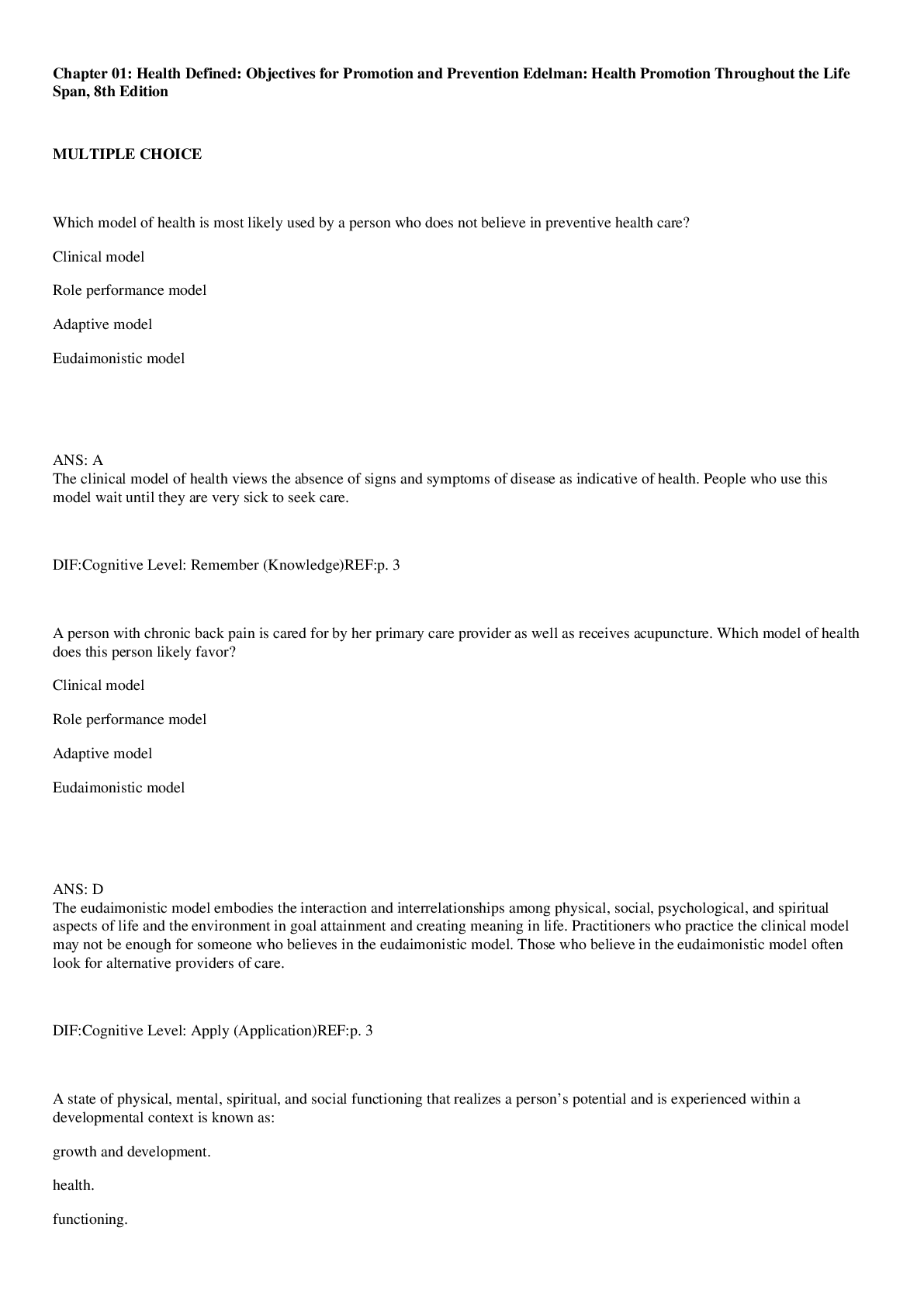
.png)

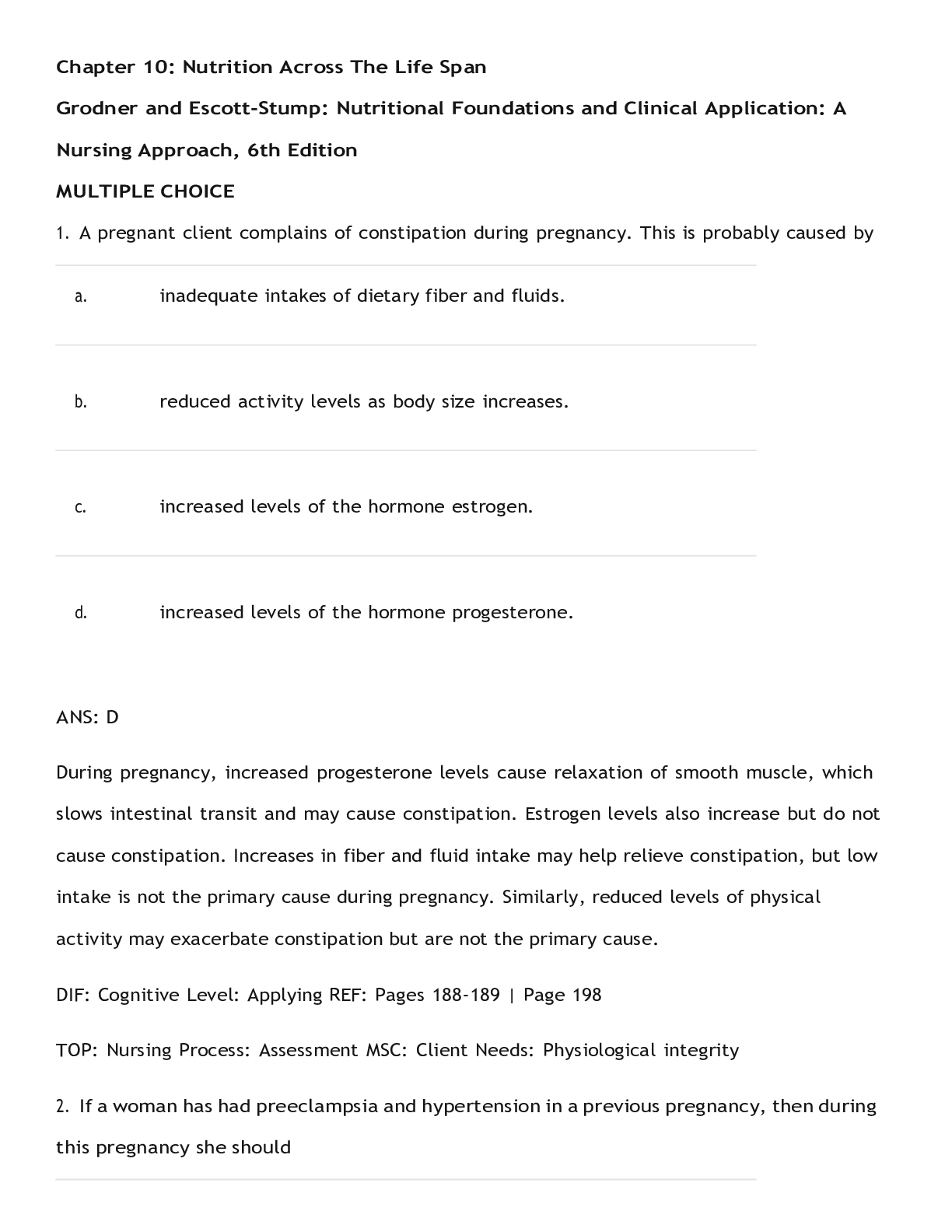

.png)
